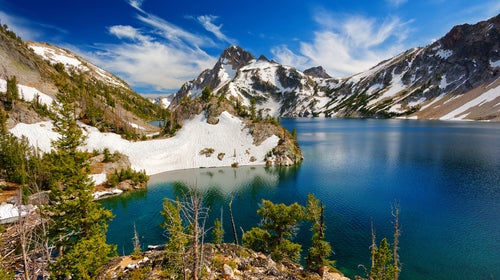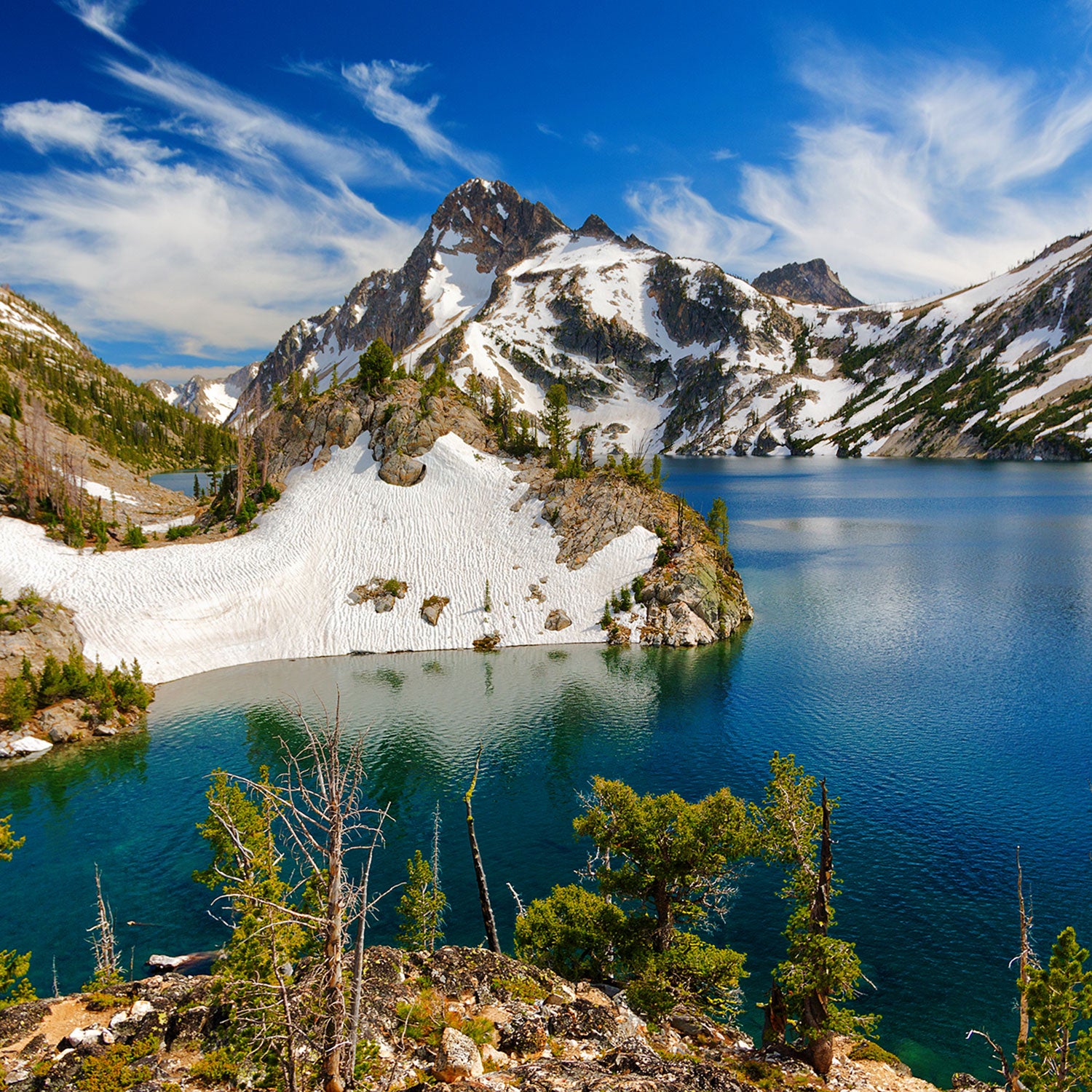For urban travelers, second-city tourism means skipping a country’s most iconic city to enjoy a destination that’s still impressive yet less trodden. Think: Chicago instead of New York City, or Manchester, England, instead of London. This concept easily translates to outdoor getaways, as well; just swap less visited but equally stunning locations in nature for the jam-packed ones.
It may sound simple, but prioritizing less visited getaways can drive serious results for at-capacity destinations. The trend is also increasingly important as crowds ravage the world’s best-known outdoor destinations. We’re not suggesting you avoid popular places forever, as they’re iconic for good reason. But if and when you do choose to visit them, lower your impact by going in the off- or shoulder seasons. (Follow our responsible national-parks travel guide for more low-impact travel tips.)
If you’re already game to head off the beaten path while helping to curb overtourism, we’ve got you covered. Here are eight of the best domestic and international “second escapes” that will offer you an epic outdoor experience and give nature’s most overrun destinations a well-deserved break.
Instead of Arches National Park, Visit Rattlesnake Canyon
Thanks to Utah’s successful “Mighty Five” national-parks campaign, Moab reached its tourism tipping point well before the pandemic—and the gateway town’s throngs haven’t diminished, particularly at Arches National Park.
Your alternative? A lesser-known but equally mesmerizing arch-dotted haven just two hours away: Colorado’s Rattlesnake Canyon.
This western Colorado escape, located within 120,000-acre McInnis Canyons National Conservation Area, is home to the second-largest concentration of arches in the U.S. The rough terrain surrounding these otherworldly wonders naturally limits guests—sandstone arches are accessible by either a rugged 4×4 drive or a 15-mile round-trip hike, so the crowd-free views are a well-earned reward—but the bites and blends here in Colorado’s wine country are additional post-adventure bonuses.
Instead of Hawaii, Visit the U.S. Virgin Islands
Hawaiian communities are begging travelers to stay home—to the point that Maui County’s mayor asked airlines to pause flights last summer. Give Hawaii a break and find those island vibes elsewhere, and without leaving the country, by booking a trip to the Caribbean’s palm-dotted U.S. Virgin Islands (USVI), where your tourism dollars are needed.
Tourism accounts for 60 percent of the USVI’s gross domestic product, and for the past five years, the territory has struggled with plummeting traveler numbers due to hurricanes and COVID-19. Is it the same travel experience as Hawaii? Of course not. The destinations are located in two different bodies of water, and the USVI are a fraction of Hawaii’s size. But these islands, islets, and cays don’t skimp on adventure—particularly St. John, where Virgin Islands National Park offers hiking, kayaking, and snorkeling.
Instead of Great Smoky Mountains National Park, Visit Monongahela National Forest
Many U.S. national parks reached peak capacity during the pandemic, but few take the cake like our country’s most visited park: Great Smoky Mountains. This getaway welcomed a whopping 14.1 million visitors in 2021—a 50 percent increase over the past decade.
Instead of adding to the congestion, hit the trail at another Appalachian getaway: West Virginia’s Monongahela National Forest, which sees roughly one million annual visitors. Its 900,000-acre red spruce–northern hardwood forest is a reforestation success story; logging and wildfires obliterated the ecologically diverse region until the early 1900s, when conservationists stepped in. Now its undulating green hills and rocky outcroppings mirror America’s most-loved park, as does its scenic backpacking potential.
Instead of Grand Teton National Park, Visit Sawtooth National Recreation Area
There’s a reason travelers flock to Grand Teton’s trailheads: the Wyoming park’s jagged peaks are among America’s most picturesque hiking backdrops. But the national park and its gateway town, Jackson, have been struggling with overtourism throughout the pandemic. The ramifications, from traffic jams to trash and human feces on the trails, are becoming unsustainable.
You can help by swapping Grand Teton with a trip to admire the equally amazing fangs of Idaho’s Sawtooth Mountains. The 756,000-acre Sawtooth National Recreation Area, just two and a half hours east of Boise, boasts 700 miles of trails, 40 peaks above 10,000 feet elevation, and campgrounds galore. Compared to Grand Teton’s 3.5 million annual visitors, Sawtooth Mountains’ 1.3 million visitors feel like nothing.
Instead of Torres Del Paine National Park, Visit Sierra Baguales
Chile’s Torres del Paine National Park is a staple on adventure bucket lists. The soaring granite massifs and aquamarine lakes dotting its famed W- and O-circuit backpacking routes are as dramatic as landscapes get. However, some fear that the park’s scenic drama could lead to its demise. Like many of America’s popular national parks, overcrowding has left Torres del Paine with everything from trash on the trails to trampled flora.
Pandemic travel closures gave the park a much needed break, and you can continue easing the ecosystem’s burden by visiting a virtually unknown Patagonia getaway on the border of neighboring Argentina: Sierra Baguales. This wild frontier, described by guides as the outback of Chile, is new to the tourism game. It’s a patchwork of privately owned estancias that only recently opened their vast, unspoiled terrain to trekkers. Agencies like W Circuit Patagonia work with estancia owners to lead crowd-free excursions that feature the peaks of Torres del Paine on the horizon and offer hikers glimpses of wildlife like guanaco and condor, which outnumber visitors at least five to one.
Instead of the Golden Circle, Drive the Diamond Circle
Few destinations are as synonymous with overtourism as Iceland, which saw visitor numbers skyrocket to 2.5 million (more than eight times the population) at its 2018 peak. The capital city of Reykjavík has been described as turning into Disneyland, with soaring rental costs decreasing the quality of life for local residents. The overtourism effects have also spread to the Golden Circle, a scenery-packed road-trip route near Reykjavík, where popular destinations like Unesco World Heritage site Thingvellir National Park and the Gullfoss waterfall have struggled with issues like trampled vegetation, visitor management, and trailside defecation.
Iceland tourism representatives attribute the problems not to widespread overtourism but to overcrowding in specific areas, like the Golden Circle. Venture beyond the main tourist track, though, and surreal, crowd-free scenery awaits.
One of the best Golden Circle alternatives is the Diamond Circle in Iceland’s vast, mountainous north. This new loop, completed in 2020, is a wild, 160-mile journey that starts in Iceland’s largest northern city, Akureyri (five hours by car from Reykjavík), and weaves by fishing villages, lava fields, hot springs, waterfalls, and snow-dusted mountains.
Instead of Masai Mara National Reserve, Safari Through Ruaha National Park
With wildebeest-migration sightings and an impressive concentration of Africa’s famed big-five animals (rhino, leopard, lion, elephant, and buffalo), it’s easy to see why Kenya’s Masai Mara National Reserve is on the radar of so many. But it may have topped too many bucket lists. Experts worry that safari crowds in Masai Mara are actually hurting the animals now, with evidence that vehicle traffic is disrupting natural wildlife patterns.
The good news: There’s a jaw-dropping and secret alternative over in Tanzania, and we’re not talking about the Serengeti. Southern Tanzania’s Ruaha National Park, a 7,800-square-mile wildlife haven and one of the largest national parks in East Africa, is well off the tourist track. You won’t see crowds, but you will see elephants, zebras, lions, giraffes, gazelles, crocodiles, and hippos.
Ruaha offers just a handful of overnight accommodations. You can stay at one of Tanzania National Parks Authority’s public campsites, or hit up one of the region’s newest offerings: Asilia’s Usangu Expedition Camp, a small, conservation-focused glamping resort set to open this summer, where guests join scientists for imperative hands-on research that will inform the area’s future conservation strategies.
Instead of Mount Everest Base Camp, Hike to Gokyo Valley
While fewer than a thousand climbers attempt to reach Everest’s summit each year, tens of thousands hike to Everest Base Camp, on the south side of the mountain. The hordes mean that you’re unlikely to experience much solitude during the gorgeous multi-day trek through the foothills of Nepal, and it’s impossible to escape the constant buzz of helicopters evacuating people along the route.
For an alternative that promises Everest views sans Everest congestion, try Nepal’s Gokyo and Renjo La route. According to adventure outfitter World Expeditions, fewer than 10 percent of the region’s trekkers hike up Gokyo Valley. This two-week expedition includes many of the signature Base Camp trek experiences: a flight to Lukla and views of earth’s tallest peak, with scenery like glaciers, azure lakes, and monasteries along the way.

